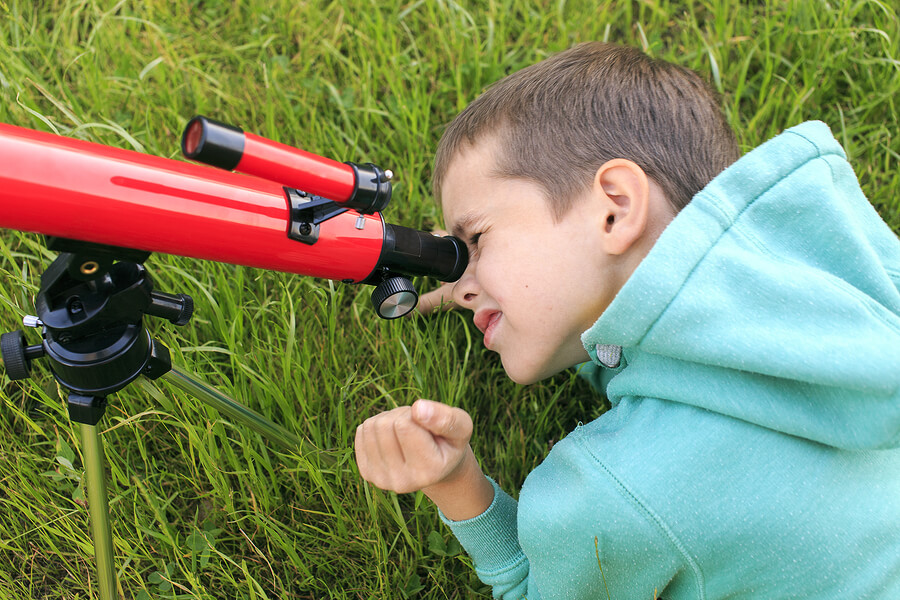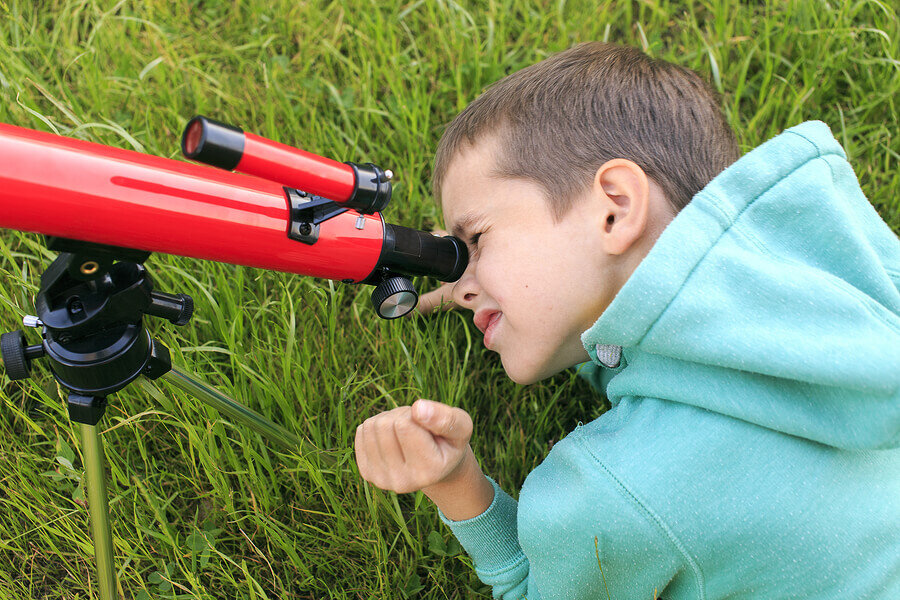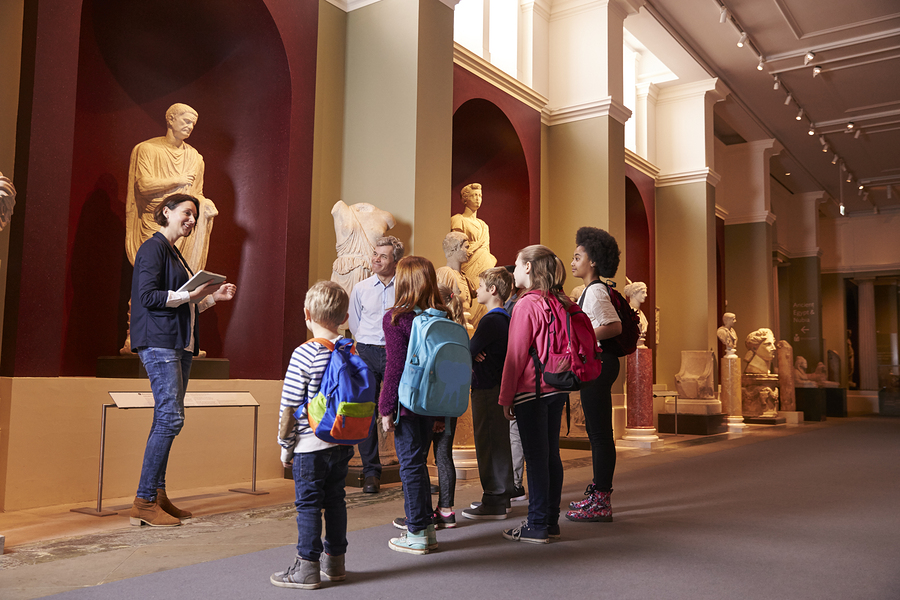“The main learning objectives are: humility of thought, evidence-based scientific thinking, human harmony and consciousness of the planet.”
Exploring space and the stars is one of the two most appealing topics for children. And is it that from the very early ages of our existence, it naturally intrigues us to know what lies beyond the world we inhabit? Does life exist on other planets? What are the beings like who live on those planets? Do they look like us humans? Can we live on other planets? Are interplanetary journeys possible? What makes up the universe? Ah! I almost forgot! Another popular topic among children is the dinosaurs, says the scientist Chris McKay, a NASA researcher on issues related to the atmospheres of the planets and astrobiology.
“The advances in research on Mars have made it possible to gain a deeper understanding of water and the conditions that must be met for this liquid to be found on the surface of a planet.”
The study of space encompasses stars, satellites, asteroids, meteorites, and other celestial bodies, but it also includes all the knowledge generated and accumulated by humanity. On many occasions, we forget that humans inhabit a planet that is part of space, and the understanding of it allows us to comprehend better the characteristics of the Earth. For example, knowing the properties of the atmosphere of Venus, the concentrations of carbon dioxide, and the temperatures present on that planet allow us to better understand the greenhouse effect and its consequences on Earth. Also, the advances in research on Mars have made it possible to gain a deeper understanding of water and the conditions that must be met for this liquid to be found on the surface of a planet. In addition, there are multiple applications in our daily lives that have come from advances in aerospace, such as telecommunications, geolocation tools, and even the gelatinization of liquids used by baby diapers.
“We (humans) think linearly (cause-effect) and space is more complex than that. There is no reference floor, so it is necessary to develop a more spherical location concept.”
Scientific advances derived from the study of space motivate the development of state-of-the-art aeronautical technology and cost efficiencies in order to restart the so-called “new space race.” This broadens the spectrum of areas of study such as remote medicine, ferry logistics, more prolonged conservation of food, construction techniques under non-terrestrial conditions, and space tourism, among others. Nations such as the United States, Russia, China, the European Community, and India have developed their own exploration and development programs for the aerospace industry, where “the sky is no longer the limit.”
Astronomy is the study of all the matter and energy in the universe, especially the concentration of this matter and energy in evolving bodies such as planets, stars, and galaxies. This science recognizes that we – humanity – are part of the universe and that our house, the Earth, is only one of many places in the universe, but also the special point from which our journey of exploration has begun (Hartmann and Impey, 1994).
“In the words of my students at the end of the course, a general thought they have expressed is that they have developed a new perspective and awareness that planet Earth is not ours; we are just beings who inhabit it.”
Challenges for the teaching of Astronomy
The first challenge has to do with the dissemination of knowledge of this subject. Astronomy is not a subject previously seen in school, and its dissemination is not extensive. The Prepa Tec Campus (high school) in Guadalajara, Mexico, is the only campus of Tecnologico de Monterrey that offers this elective science subject. In this same city, we have not found another high school or school that teaches it. Knowing the importance this subject has in the training of young people, a group of teachers discussed this problem in a roundtable at the Prepa Tec high school congress in the summer of 2019, so that other teachers might consider teaching this subject, replicating the course that we designed. Our proposal was well-received, and several teachers decided to continue the conversation via email. To date, four professors interested in replicating the Astronomy course on their campuses have joined.
The course that I teach, Introduction to Astronomy and the Use of Telescopes, has the goal of developing cognitive perspectives higher than those usually utilized. Astronomy is addressed as a framework for learning and seeks to develop four main objectives:
-
Humility of thought
-
Evidence-based scientific thinking
-
Human harmony
-
Consciousness of the planet
The course covers three blocks:
1. Perspective from Earth. How do we rotate, and what effect does this have on our nighttime observations? This block covers the orientation provided by the constellations, the effects of the movements of the planet, the uses of astronomy by the ancients, etc.
2. The solar system and astronomical bodies. The aspects of each planet in this solar system and the composition of the stars, galaxies, and planets of other systems, etc.; the use of telescopes, and, especially, how to explain the knowledge of all this to people who do not know the subject.
3. Projections of astronomy. Where are the research programs going about other planets, life beyond Earth, and technological development, etc.?
In the words of my students at the end of the course, a general thought they have expressed is that they have developed a “perspective and awareness that planet Earth is not ours; we are just beings who inhabit it.”
Another challenge to the study and teaching of Astronomy is the fact that we (humans) think linearly (cause-effect), but space is more complex than that. From the beginning, a more spherical than flat thinking is required, to use an analogy. For example, on Earth, we take for granted the concepts of “up” (an opposite direction to the ground) and “down” (in the direction of the ground), but when we think in terms of the planet, we realize that our “up” is the “down” of those who inhabit the southern hemisphere. In interplanetary travel (the space probes that have been sent for decades), there is no reference floor, so it is necessary to have other planes of reference and a more spherical concept of location. Just to mention another example, there is the erroneous belief that winter happens when the planet is farther from the sun and summer when it is closest to it. In fact, when in the northern hemisphere it is summer, we are at the farthest point from the sun, and at the same time, it is winter in the southern hemisphere. This marked difference in the climates of both hemispheres is due to the planet having a spherical shape and an inclination in its axis of rotation.
In order to achieve better teaching in this area of knowledge, the CAPER (Center for Astronomy and Physics Education Research) group designed a series
of tutorials that the teacher can use after teaching his/her class. Each tutorial consists of seven questions. This seeks to get students to “land” what the teacher taught (i.e., they “get it.”) At the same time, peer learning is encouraged. Students discuss the topics that are addressed in class among themselves, using the language of the course to achieve better communication of their perspectives, clarifications of questions, and explanations of concepts. The results they have obtained are positive, improving the comprehension of the subjects seen in a class by 70% to 85%. Currently, we are collaborating with CAPER, adapting the educational material they produce to the Spanish language.
Would you like to teach the subject of Astronomy, replicating the course we designed for interested teachers with the collaboration of CAPER? Or, would you share your experience with us on that topic? Do not hesitate to contact me.
About the author
Cuauhtémoc Méndez (mendezprofe@tec.mx) holds a master’s degree in Education and Cognitive Development. He is a Professor of the elective course, Introduction to Astronomy and the Use of Telescopes, in the Prepa Tec of the Guadalajara Campus. He is also a representative of CAPER (Center for Astronomy and Physics Education Research) in Latin America.
References
Hartmann, W., and Impey, C. (1994). Astronomy, the Cosmic Journey. 5th edition. Wadsworth Publishing Inc.
This article from Observatory of the Institute for the Future of Education may be shared under the terms of the license CC BY-NC-SA 4.0 
)
)








)
Judith Pérez Arceo
Judith Pérez Arceo
Judith Pérez Arceo